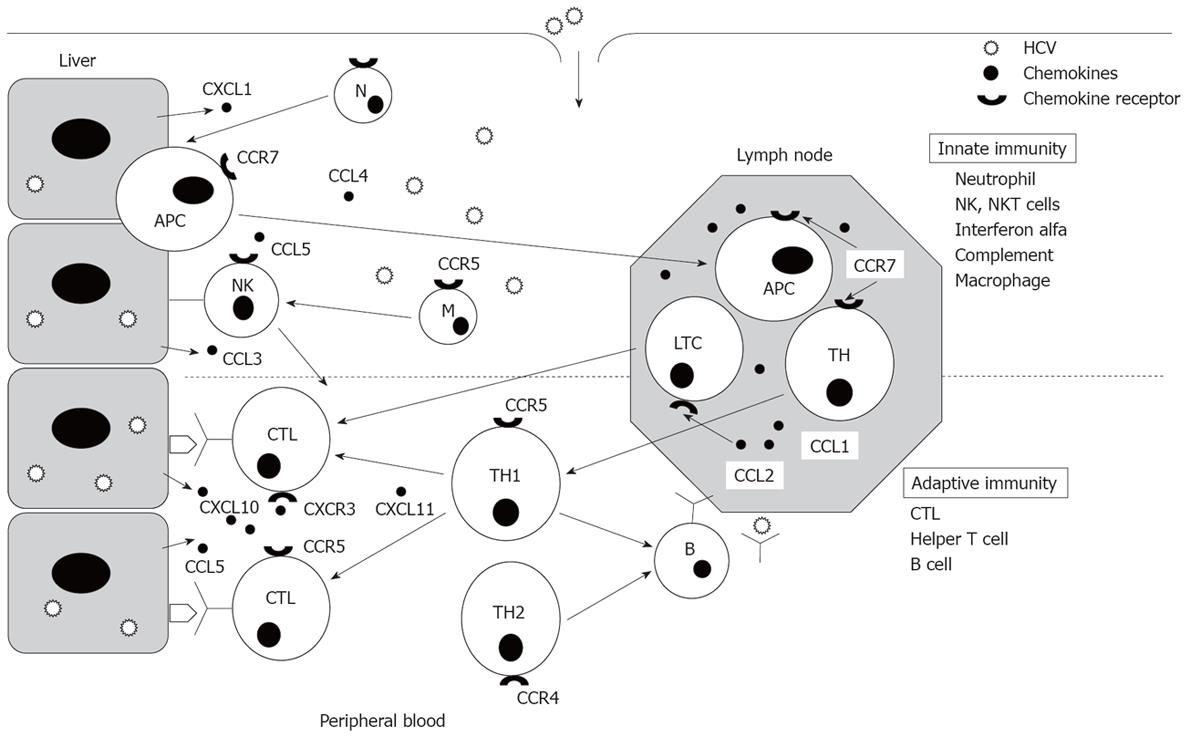Copyright
©2008 The WJG Press and Baishideng.
World J Gastroenterol. Dec 21, 2008; 14(47): 7149-7159
Published online Dec 21, 2008. doi: 10.3748/wjg.14.7149
Published online Dec 21, 2008. doi: 10.3748/wjg.14.7149
Figure 1 Innate and adaptive immune response.
Importance of specific cytotoxic T cell response. In a non-cytopathic viral infection the development of a vigorous specific cytotoxic T lymphocyte (CTL) response is essential. Professional antigen presenting cells (APC) take up viral antigens and migrate from infected parenchyma to the lymph nodes to prime naive specific CTLs. These cells express the chemokine receptor CCR7 to reach the lymph nodes, attracted by CCL1 and CCL2 chemokines. After priming, specific CTLs lose CCR7 expression and up-regulate CCR5 and CXCR3 chemokine receptors, then migrate to the hepatic parenchyma to develop their effector function, attracted by the chemokines produced in the liver. During the early phase of infection, innate immunity is the first barrier for fighting against the virus. The cellular innate response is also recruited in the infected parenchyma by the interaction between chemokines and their receptors.
- Citation: Larrubia JR, Benito-Martínez S, Calvino M, Sanz-de-Villalobos E, Parra-Cid T. Role of chemokines and their receptors in viral persistence and liver damage during chronic hepatitis C virus infection. World J Gastroenterol 2008; 14(47): 7149-7159
- URL: https://www.wjgnet.com/1007-9327/full/v14/i47/7149.htm
- DOI: https://dx.doi.org/10.3748/wjg.14.7149









